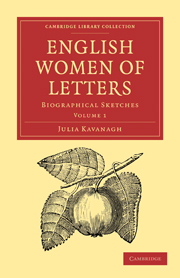Summary
The “Romance of the Forest” appeared in 1791, a year after the “Sicilian Romance.” Mrs. Radcliffe, however, took three years to mature her longest and most popular work, “The Mysteries of Udolpho,” published in 1794. It is difficult to speak of this remarkable book; it can be compared to none save Mrs. Radcliffe's other works, and it is superior to all in power and conception. The “Castles of Athlin and Dunbayne” is a weak and pale story; the “Sicilian Romance” leaves impressions, but no distinct remembrance. “The Romance of the Forest” is graceful, but easily forgotten; but it is impossible to read “The Mysteries of Udolpho,” and forget it.
Its faults, as well as its beauties, both wonderful, are stamped with a mighty impress. Bad taste, bad grammar, characters weakly drawn, deep terrors that resolve into commonplace incidents, strange and horrible adventures that lead to nothing, beset us on every side. What of that? We areled through scenery soft, splendid, and grand, such as we may have imagined, but have never seen; through a sublime world, peopled with beings real enough to arrest attention, sufficiently unreal not to harrow; beings that seem called forth from nothing to yield us a sense of freshness and repose in the very midst of terror, so unlike all we know are both that terror and they.
- Type
- Chapter
- Information
- English Women of LettersBiographical Sketches, pp. 288 - 331Publisher: Cambridge University PressPrint publication year: 2010First published in: 1863



